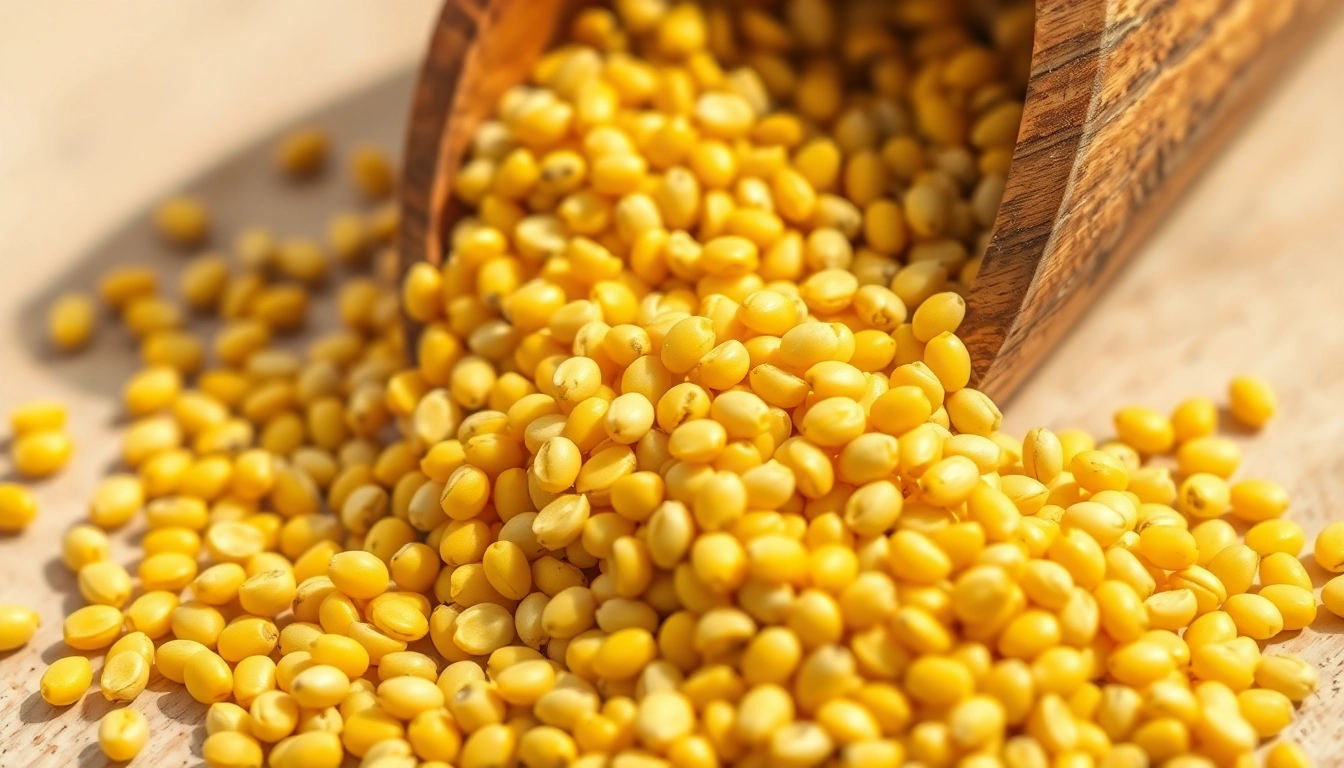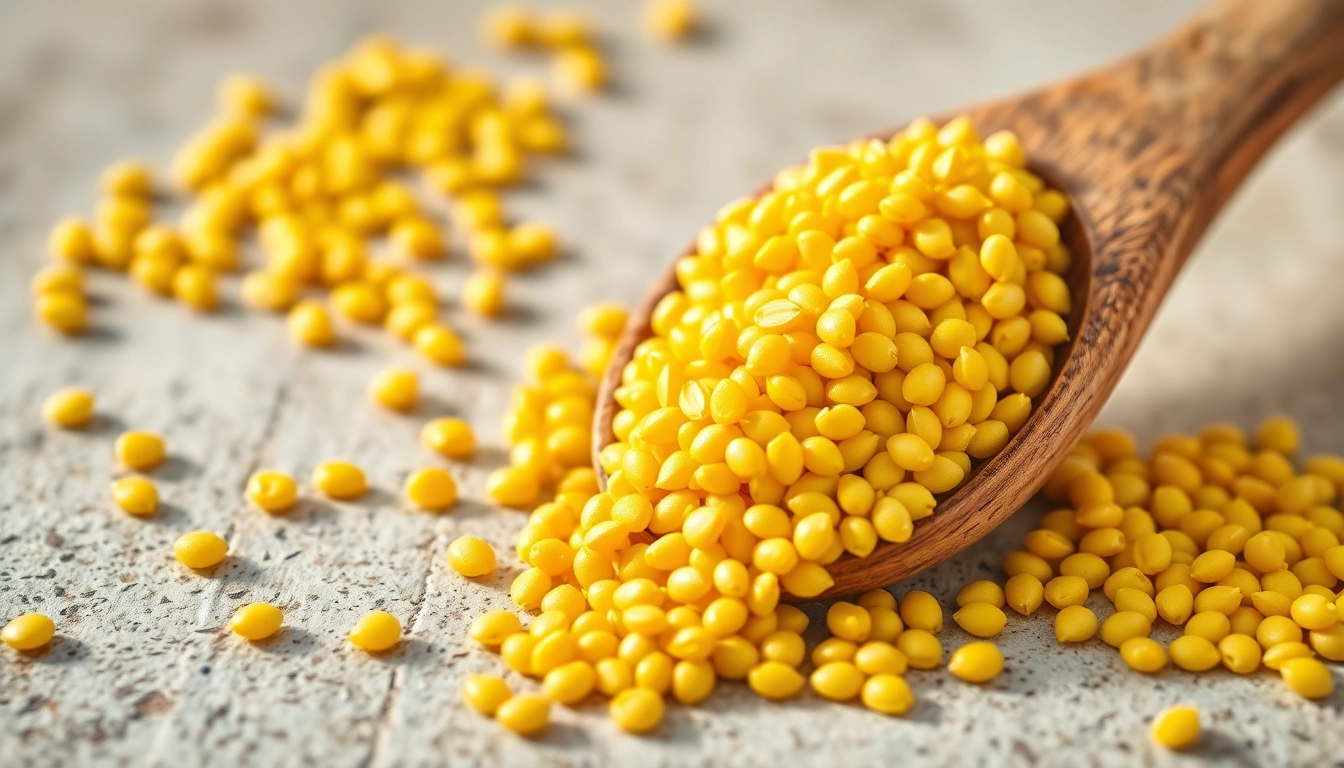Understanding the Market for Yellow Mustard Seeds
Yellow mustard seeds are a staple ingredient in culinary traditions worldwide, particularly renowned in Indian, European, and North American cuisines. Their distinctive flavor and versatility make them a popular choice among spice manufacturers, food processors, and consumers seeking authentic, high-quality spices. The global demand for yellow mustard seeds is influenced by numerous factors, including changing consumer preferences, health trends, and the expanding processed food industry. As a leading Yellow Mustard Seeds manufacturer and exporter, Spice Nest keenly monitors these market dynamics to strategically position its products and meet international standards.
Global Demand and Supply Dynamics
The global mustard seeds market is projected to experience steady growth driven by increasing consumption in both traditional and modern food sectors. Countries like Canada, India, Russia, and Ukraine are among the largest producers, supplying a significant portion of the world’s mustard seeds. However, fluctuations in weather conditions, agricultural policies, and international trade agreements can impact supply stability. For instance, India’s mustard seed crop benefits from favorable climatic conditions and government support, positioning it as a leading exporter.
Supply chain disruptions during recent years demonstrated the importance of reliable sourcing and quality assurance. Consequently, manufacturers like Spice Nest prioritize cultivating and sourcing authentic, high-grade yellow mustard seeds that meet both local and international standards. This focus ensures a consistent supply to end-users and helps maintain competitive pricing.
Key Consumers and Target Markets
Primary consumers of yellow mustard seeds include spice traders, food processing companies, retail outlets, and culinary institutions globally. The Indian, Middle Eastern, European, and North American markets lead in demand, owing to their rich culinary traditions and growing health-conscious consumer base. In particular, health-focused trends—highlighting mustard seeds’ nutritional benefits such as antioxidants, anti-inflammatory properties, and digestive aids—have amplified their popularity.
Exporters like Spice Nest target these areas by aligning product standards with consumer preferences, emphasizing purity, and offering diverse packaging options tailored for retail, wholesale, and food service segments. Additionally, emerging markets in Southeast Asia and Africa provide promising opportunities for expansion due to increasing urbanization and demand for flavorful, natural ingredients.
Emerging Trends in Mustard Seed Consumption
The modern food industry witnesses expanding trends such as organic labeling, clean-label ingredients, and sustainable sourcing. Consumers are increasingly seeking products free from additives and chemical residues, hence boosting demand for certified organic and heritage varieties of yellow mustard seeds. Additionally, functional foods incorporating mustard seeds for their health benefits are gaining popularity.
Innovative applications include mustard seed-infused products like health supplements, savory snacks, and plant-based alternatives. The rise of online shopping platforms and global food expos also facilitates the spread of authentic mustard seed products, thereby increasing market visibility and consumer engagement.
Optimizing Product Presentation and Branding
Effective Packaging Designs for Yellow Mustard Seeds
Packaging plays a crucial role in capturing consumer attention and communicating product quality. Modern packaging designs for yellow mustard seeds should reflect purity, freshness, and authenticity. Using vibrant, appealing visuals and transparent windows can help showcase the original color and texture of the seeds, assuring buyers of their quality.
Moreover, eco-friendly packaging materials align with the sustainable preferences of today’s consumers. Incorporating clear labeling with detailed information about origin, certifications (such as organic or ISO standards), and usage suggestions enhances credibility and brand trust.
Creating Compelling Branding Messages
Strong branding hinges on emphasizing unique selling propositions such as premium quality, authenticity, and health benefits. Phrases like “Pure Indian Yellow Mustard Seeds” or “Authentic, Certified, and Rich in Flavor” can resonate with discerning buyers. Slogans should evoke trust, tradition, and health-consciousness to differentiate from competitors.
Case studies reveal that storytelling—highlighting the sourcing story, traditional cultivation practices, or certifications—further reinforces brand loyalty. Consistent branding across all platforms, including packaging, website, and promotional materials, creates a cohesive consumer experience.
Utilizing Attractive Visuals and Descriptions
High-quality visuals are vital for online marketing and catalogs. Using close-up images that highlight the vibrant yellow hue and uniformity conveys product freshness. Complementing visuals with engaging descriptions about the flavor profile, culinary versatility, and health benefits enhances consumer interest.
For example, describing the seeds as “premium-grade, naturally sourced, and ideal for a variety of recipes—from pickles to cooking pastes”—can motivate purchases. Additionally, showcasing application images and testimonials from chefs or nutritionists can add credibility and appeal.
Digital Marketing Techniques for Mustard Seed Manufacturers
SEO Strategies for Yellow Mustard Seed Websites
Optimizing your website for search engines is essential to attract global buyers. Focus on keywords like “Yellow Mustard Seeds,” “Pure Mustard Seeds Exporters,” and “Organic Mustard Seeds India.” Incorporate these keywords naturally into page titles, meta descriptions, headers, and product descriptions.
Content marketing through blogs, case studies, and FAQs enhances SEO performance. For instance, publishing articles on “Health Benefits of Mustard Seeds” or “How to Use Yellow Mustard Seeds in Cooking” increases organic traffic. Ensuring fast page load times, mobile responsiveness, and secure browsing further improves rankings.
Content Creation: Recipes and Health Benefits
Creating and sharing recipes that feature yellow mustard seeds pique consumer interest and demonstrate product versatility. Video tutorials, blog posts, and downloadable PDFs can showcase easy-to-make dishes like mustard chutneys, marinades, and pickles.
Highlighting health benefits backed by scientific research builds credibility. For example, emphasizing mustard seeds’ antioxidants, vitamins, and anti-inflammatory properties can appeal to health-conscious consumers.
Engaging Social Media Campaigns to Boost Visibility
Platforms like Instagram, Facebook, and LinkedIn serve as powerful tools for brand engagement. Sharing vibrant images, customer testimonials, and behind-the-scenes glimpses of cultivation and processing fosters a community around your brand. Running contests, influencer collaborations, and targeted advertisements can amplify reach.
Incorporate stories about product origin, certifications, and customer success stories to build authenticity and trust.
Distribution Channels and Partnerships
Identifying Reliable Supply and Distribution Partners
Building a robust supply chain involves partnering with trusted farmers, co-operatives, and logistics providers. Ensuring traceability and quality standards at every stage reduces risks of contamination and adulteration.
Establishing strong relationships with importers, distributors, and wholesale markets in target countries ensures steady demand. Certifications such as ISO, Organic, and Fair Trade can open doors to premium markets.
Expanding Retail and Wholesale Networks
Expanding retail presence involves collaborations with supermarkets, specialty food stores, and online marketplaces. Offering attractive packaging and flexible MOQ (minimum order quantity) caters to diverse customer needs.
Wholesale channels, including food service providers and ingredient suppliers, provide volume opportunities. Participation in trade fairs like Biofach or FoodEx enhances networking and visibility.
Participating in Food Fairs and International Expos
Trade shows and expos present invaluable opportunities to showcase products, gather market intelligence, and forge new partnerships. Spice Nest’s successful presence at Biofach 2024 exemplifies how exposure at such events elevates brand recognition.
Preparing professional booths, samples, and promotional materials tailored to international audiences maximizes impact. Following up with contacts post-events consolidates business relationships.
Measuring Success and Continuous Improvement
Tracking Sales and Website Analytics
Utilize analytics tools like Google Analytics to monitor website traffic, user behavior, and conversion rates. Tracking which pages or products generate the most interest guides your marketing focus.
Sales data analysis reveals demand trends, helping optimize production and inventory management. Setting KPIs such as lead conversion rate and customer acquisition cost supports strategic planning.
Gathering Customer Feedback for Product Enhancement
Encourage feedback through surveys, online reviews, and direct communication. Understanding customer preferences and pain points informs product improvements and new product development.
Case studies indicate that responsive customer service and continuous product refinement foster loyalty and referral business.
Adjusting Marketing Tactics Based on Insights
Data-driven adjustments might include refining SEO keywords, launching targeted ad campaigns, or introducing new product variants. Staying agile in marketing strategies ensures relevance and competitive edge.



